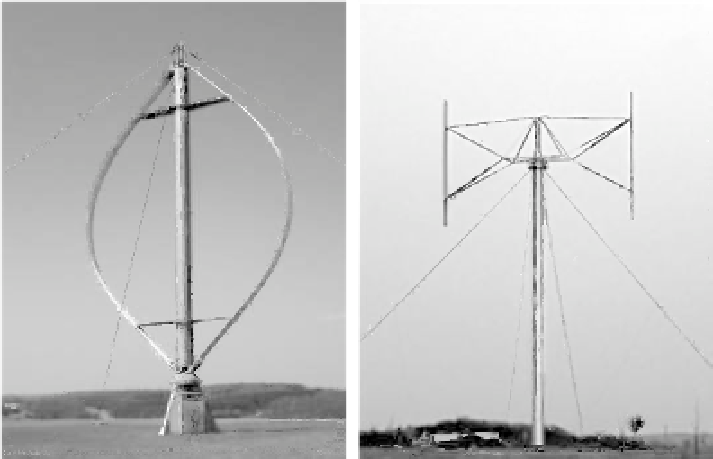Environmental Engineering Reference
In-Depth Information
Even if Honnef's 120 m diameter ring generators were most
likely not realisable, he was still one of the DD pioneers. His work,
however, came to an end with the beginning of the Second World
War in 1939.
And yet another quiet pioneer should not be forgotten.
Gerd
Otto, a researcher based in the former German Democratic Republic,
described in detail a DD wind turbine with permanent magnets in
his scripts as well as in his patent application in 1986.
The concept of the Persian windmills, mentioned in the
beginning, was not entirely forgotten. Wind turbines for elecricity
production were models for vertical-axis turbines like the Darrieus-
or H-rotor (Fig. 19.16). However, they were never successful.
Figure 19.16
(left) Darrieus Rotor, Heroldstatt, Germany (Photo: W. Wacker);
(right) H-rotor Darrieus turbine (Photo: Stahlkocher).
In contrast to the Persian archetype, modern vertical turbines
are not installed between walls in a slipstream, and can operate
independent from the wind direction. That brings up a new
problem: each rotor blade has to turn against the wind, which
causes torque variation and hence reduces the life span of a turbine.
Nevertheless, new concepts and development still come about,
but could not really compete with horizontal-axis turbines.



Search WWH ::

Custom Search